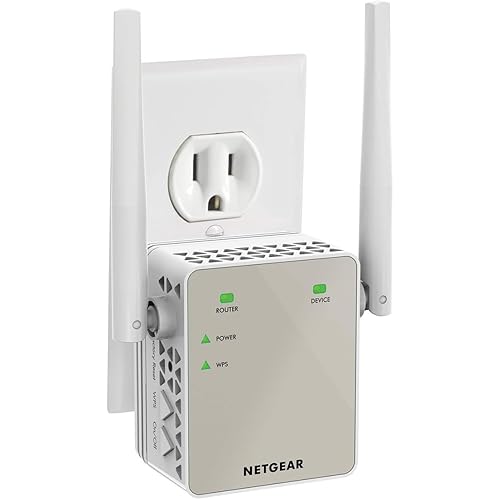Linksys WiFi 5 Router, Tri-Band, 3,500 Sq. ft Coverage, 25+ Devices, Speeds up to (AC4000) 4.0Gbps - EA9300








Buy Now, Pay Later
- – Up to 36-month term if approved
- – No impact on credit
- – Instant approval decision
- – Secure and straightforward checkout
Ready to go? Add this product to your cart and select a plan during checkout.
Payment plans are offered through our trusted finance partners Klarna, Affirm, Afterpay, Apple Pay, and PayTomorrow. No-credit-needed leasing options through Acima may also be available at checkout.
Learn more about financing & leasing here.
Selected Option
This item is eligible for return within 30 days of receipt
To qualify for a full refund, items must be returned in their original, unused condition. If an item is returned in a used, damaged, or materially different state, you may be granted a partial refund.
To initiate a return, please visit our Returns Center.
View our full returns policy here.
Recently Viewed
Style: AC4000
Features
- Maximum Range : 3500 Sq Ft
- Intelligent Tri Band router with Net Gen. 1.8GHz Quad Core CPU and 3 offload processors to release your WiFi performance and provide 3 Ultra high speed WiFi bands up to 4 Gbps
- Next Gen AC Wi Fi + MU MIMO + Airtime fairness improves network efficiency and provides ultra fast Wi Fi speeds to all your home and home office devices at the same time, same speed. Smart Connect intelligently selects the best radio band for your wireless device
- Advanced Beamforming with 9 high power amplifiers extend and maximize performance and coverage for both 2.4GHz & 5GHz. Minimum System Requirements:Latest versions of Google Chrome, Firefox, Safari (for Mac and iPad), Microsoft Edge and Internet Explorer version 8 and newer
- 6 active high gain antennas expand WiFi range throughout a large size home; 5 Gigabit Ethernet ports for wired speeds 10x faster than standard Ethernet for printers, game consoles and Smart TVs
- Auto firmware updates always keep your router updated with latest features and security measures
Description
The high speed Max Stream AC4000 MU MIMO Tri Band Router (EA9300) gives everyone in your home binge worthy Wi Fi to multiple devices at the same time, same speed. With MU MIMO technology, numerous devices receive blazing fast speed without buffering, keeping every movie lover and multi player gamer in your family happy, even while you video conference. Tri band technology provides an additional high speed 5 GHz band for total combined speeds up to 4.0 Gbps. Pair this router with a Max Stream Range Extender for Seamless Roaming so your device is always connected to the strongest Wi Fi signal and you can video chat and stream throughout your home without lag or buffer. The Linksys App allows you to control and monitor the EA9300. Kindly refer to page 14 in the User Manual for troubleshooting steps.
Brand: Linksys
Model Name: EA9300
Special Feature: Linksys Smart Wi-Fi, 802.11ac Wireless Technology, Concurrent Tri-band, Speeds of up to 4.0 Gbps, Quad-Core Processor, 3x3 Spatial Streams, MU-MIMO, Seamless Roaming, Beamforming Technology, 4 x LAN Gigabit / 1 x WAN Gigabit ports, 2 x USB 3.0 Ports See more
Frequency Band Class: Single-Band
Wireless Communication Standard: 802.11a/b/g/n/ac
Compatible Devices: Gaming Console, Printer, Smart Television
Frequency: 5 GHz
Recommended Uses For Product: Business, Gaming, Home, Personal
Included Components: Linksys AC4000 MU-MIMOTri-Band Router, EA9300• Quick Start Guide• Ethernet Cable• Power Adapter• Regulatory and WarrantyDocumentation See more
Connectivity Technology: Wireless
Product Dimensions: 11.58 x 9.01 x 2.26 inches
Item Weight: 3.6 pounds
Item model number: EA9300
Batteries: 2 Lithium Ion batteries required.
Is Discontinued By Manufacturer: No
Date First Available: May 11, 2017
Manufacturer: Linksys
Frequently asked questions
To initiate a return, please visit our Returns Center.
View our full returns policy here.
- Klarna Financing
- Affirm Pay in 4
- Affirm Financing
- Afterpay Financing
- PayTomorrow Financing
- Financing through Apple Pay
Learn more about financing & leasing here.
Similar Products
Top Amazon Reviews
























